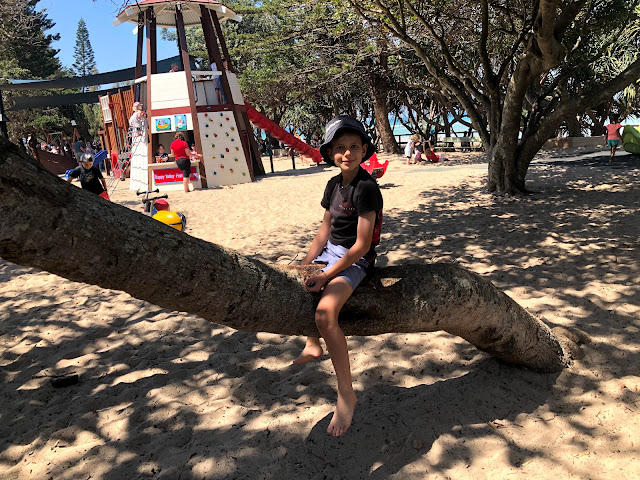Social Learning, Attachment, and Domestic and Family Violence
Introduction
This essay explores the causes and effects of young people witnessing domestic and family violence (DFV). It commences by defining and explaining what DFV is. Next, this type of abuse is critically analysed to determine how it occurs. Two theories are relied upon in the analysis, those being social learning theory and attachment theory. Following this, the prevalence of witnessing DFV is discussed on national and international scales. Finally, the human rights violations applicable to this abuse type are touched upon with specific reference to the United Nations Convention on the Rights of the Child (1989).
Definition and Explanation
Domestic violence (DV) and family violence (FV) each have slightly different meanings. DV refers specifically to violence occurring between current or former intimate partners. It involves one party attempting to execute power and control over the other through fear, intimidation, violence, and threatening behaviours (Ferraro et al., 2021). FV is broader in its scope, describing violence and abuse occurring between not only current and former intimate partners, but also family members. Some examples include parents, children, and siblings (Ferraro et al., 2021). Young people witnessing DFV is a form of child abuse (Robinson, 2019).
Critical Analysis
Social learning theory can be used to hypothesise some potential reasons for the continuity of DFV through multiple generations in some families. Social learning refers to people learning from those around them both with and without reinforcement (Burton et al., 2019). When applied to the context of young people witnessing DFV, this theory, therefore, essentially holds that children become adult products of the environments they were raised in. Perry (1997) aptly describes these abused children as being, “…incubated in terror…waiting to be the one that controls, the one who takes, the one who hits, the one who can make the fear, not take the fear” (p. 10). This perspective provides a poignant lens through which one might begin to understand how and why this form of child abuse often continues inter-generationally. Many of these tormented children become adult tormenters because this was modelled to them by caregivers as acceptable behaviour and an effective means of power (Burton et al., 2019).
Attachment theory is another framework useful for potentially explaining some instances of DFV and child and adolescent exposure to it. Secure and safe attachment to a primary caregiver is a vital emotional need which Bryce (2017) describes as a “prototype” (p. 18) for future adulthood relationships. An example of a secure and safe attachment for an infant or child is a nurturing and loving relationship in which the child’s emotional and physical needs are consistently met in a timely manner. The parent or caregiver’s own emotions and behaviour should, ideally, be controlled and predictable for the child (Burton et al., 2019). When a child’s attachment to their primary caregiver is not secure and this is not addressed, the maladaptive pattern is at risk of repeating. This often occurs in future romantic relationships and can imprint on the attachment formed with their own children. This can create what is referred to as an intergenerational cycle of violence (Bryce, 2019). A DFV perpetrator’s personal history of potential victimisation and poor or unstable attachment in their own childhood is, therefore, a useful tool in determining why an individual may be behaving violently or abusively. To that end, this ascertained knowledge could potentially assist helping professionals in their development of tailored treatment plans and interventions for the families or individuals that they are working with.
Prevalence
The 2013 Australian Bureau of Statistics’ Safety Survey found that 21 per cent of women living in regional, rural, and remote areas, had personally experienced DV, compared to 15 per cent living in capital cities (Campo & Tayton, 2015). This is a significant finding which may indicate that life in regional, rural, and remote areas of Australia may come with additional stressors for families. This may potentially contribute to the occurrence and cyclic nature of DFV in these communities. Nevertheless, it is probable that these figures may be significantly higher because they do not account for victims who may be too fearful of retribution from their abuser, to disclose their abuse (Campo & Tayton, 2015). For this reason, these statistics should be interpreted with due caution.
At the international
level, Wake and Kandula’s (2022) review of cross-sectional studies is a rich
source of data. They found that the coronavirus (COVID-19) pandemic and its
associated lockdowns were aggravating factors, influencing both the occurrence
and prevalence of DFV. This was concluded due to an estimated 31 per cent
increase in reported instances of DFV, following the mandated lockdowns in 11 different
countries (Wake & Kandula, 2022). One possible explanation for this
increase is the influence of childhood abuse on one’s development of
resilience. Bryce (2017) notes that resilient people have at their disposal, a
set of healthy coping mechanisms which allow them to navigate stressful
situations and life events with relevant ease. DFV and its associated
cumulative harm effects can often hinder the development of resilience (Bryce,
2017). COVID-19 and its associated lockdowns were a globally unprecedented,
highly stressful situation with multifaceted levels of stress, including but not
limited to, financial strain, mental and physical health impacts, and social
isolation (Wake & Kandula, 2022). It is thus plausible that these
additional stressors contributed, at least in part, to the sharp increase in
reported DFV cases globally.
Human Rights Violation
On 20 November 1989, the United Nations Convention on the Rights of the Child was adopted. Exposing young people to DFV, and indeed, failing to protect children who are being exposed to DFV, is a direct violation of Article 19 of the United Nations Convention on the Rights of the Child (1989). Article 19 (1) states:
"Parties shall take all appropriate legislative, administrative, social and educational measures to protect the child from all forms of physical or mental violence, injury or abuse, neglect or negligent treatment, maltreatment or exploitation, including sexual abuse, while in the care of parent(s), legal guardian(s) or any other person who has the care of the child."
As discussed earlier, exposing young people to DFV is child abuse (Robinson, 2019), therefore protecting children from all forms of abuse would include DFV exposure. Article 19 (2) sets out the necessary steps to act to protect known abused, neglected, or maltreated children (United Nations Convention on the Rights of the Child, 1989). It also touches upon such things as, prevention, investigation, treatment, and follow-up.
Article 39 of the United Nations Convention on the Rights of the Child (1989) stresses the necessity of recovery measures for child victims of abuse. It is further specifically stated that this recovery must occur in a healthy and respectful environment. A home where DFV is continuing is not conducive to these requirements. Repeated instances of DFV, post-identification, could therefore be viewed as a human rights violation, under the United Nations Convention on the Rights of the Child (1989). It can thus be surmised that exposing young people to DFV is a human rights violation in and of itself. Further, failure to restore peace and reunification to the family unit and home, post-DFV exposure, is a further violation of the child’s rights.
Conclusion
The causes and effects of young people witnessing DFV have been explored. A definition of what DFV is, was provided. This was broken down into its two separate, yet interrelated domains, DV and FV. Children witnessing either of these forms of violence is recognised as child abuse, hence the compartmentalisation of both terms into the umbrella definition, DFV. Social learning theory and attachment theory were referenced to examine possible explanations for how and why DFV occurs and continues. The context and cyclical nature of intergenerational transmission of DFV was of relevance. The prevalence of DFV at both national and international levels was examined. It was noted that Australian women living in non-capital cities were, on average, 5 per cent more likely to have experienced DFV. On a global scale, the influence of the COVID-19 pandemic appeared to be a transnational aggravating factor for increased rates of DFV. It was hypothesised that this might be somewhat explained by an unprecedented level of unexpected life stressors, coupled with potentially lower levels of resilience in adult DFV survivors. The need for historical evaluation of potential childhood victimisation in DFV perpetrators was stressed. It was hypothesised that, in some instances, this could enable targeted treatment and intervention for individuals and families. Finally, Articles 19 and 39 of the United Nations Convention on the Rights of the Child (1989) were used to illustrate how witnessing DFV could constitute a violation of children’s fundamental human rights.
It has been demonstrated that exposing young people to DFV is a prevalent, insidious, and significant form of child abuse worldwide. The numerous negative ramifications affect, not only adult survivors, but they also often continue to ripple down through future generations. This can create a complex intergenerational cycle of abuse, the serious consequences of which cannot, and should not, be understated.
References
Bryce, I. (2017). Cumulative harm and resilience framework: An
assessment, prevention and intervention resource for helping professionals (1st
ed.). Cengage Learning Australia.
Bryce, I. (2019). Cumulative harm: Chronicity, revictimization, and
developmental victimology. In I. Bryce, Y. Robinson, & W. Petherick (Eds.),
Child abuse and neglect: Forensic issues in evidence, impact, and management (pp.
151–173). Academic Press.
Burton, L., Westen, D., & Kowalski, R. (2019). Psychology (5th ed.).
Wiley.
Campo, M. & Tayton, S. (2015). Domestic and family violence in
regional, rural and remote communities: An overview of key issues. Australian
Institute of Family Studies. https://www.researchgate.net/publication/286264630_Domestic_and_family_violence_in_regional_rural_and_remote_communities_An_overview_of_key_issues
Ferrara, P., Franceschini, G., Corsello, G., Mestrovic, J., Giardino,
I., Vural, M., Pop, T. L., Namazova-Baranova, L., Somekh, E., Indrio, F., &
Pettoello-Mantovani, M. (2021). Children witnessing domestic and family
violence: A widespread occurrence during the coronavirus disease 2019
(COVID-19) pandemic. The Journal of Pediatrics, 235, 305–308. https://doi.org/10.1016/j.jpeds.2021.04.071
Robinson, Y. (2019). Child abuse: Types and emergent issues. In I.
Bryce, Y. Robinson, & W. Petherick (Eds.), Child abuse and neglect:
Forensic issues in evidence, impact, and management (pp. 3–22). Academic Press.
Perry, B. D. (1997). Incubated in terror: Neurodevelopmental factors in
the ‘cycle of violence’ child trauma academy version. In J. Osofsky (Ed.), Children,
youth and violence: The search for solutions (pp. 124–148). Guilford Press.
United Nations Convention on the Rights of the Child, November 20, 1989, https://www.ohchr.org/en/instruments-mechanisms/instruments/convention-rights-child
Wake, A. D. & Kandula, U. R.
(2022). The global prevalence and its associated factors toward domestic
violence against women and children during COVID-19 pandemic—“The shadow
pandemic”: A review of cross-sectional studies. Women’s Health (London,
England), 18. https://doi.org/10.1177/17455057221095536
google.com, pub-5896944412523933, DIRECT, f08c47fec0942fa0
All rights reserved © 2024 Carla Greenfield









Comments
Post a Comment